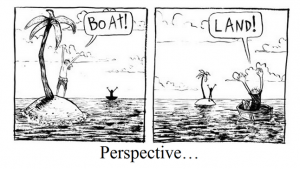Different perspectives on legal sufficiency
March 26, 2020The estate of Billy Dickson alleged that he died from asbestos exposure at a Bell Helicopter plant. The estate won at trial on a theory of gross negligence. The panel reversed on legal sufficiency grounds, finding no evidence that Bell subjectively knew of a risk to Dickson based on his use of boards containing asbestos as part of the testing of helicopter components. Bell Helicopter Textron v. Dickson, No. 05-17-00979-CV (Aug. 23, 2019) (mem. op.) Justice Bridges wrote the opinion, joined by Justice Whitehill and then-Justice Brown.
 The full court denied en banc review on March 25. Justice Bridges signed the order, apparently joined by Justices Myers, Whitehill, Schenck, Pedersen, and Evans. Justices Molberg and Nowell did not participate.
The full court denied en banc review on March 25. Justice Bridges signed the order, apparently joined by Justices Myers, Whitehill, Schenck, Pedersen, and Evans. Justices Molberg and Nowell did not participate.
A dissent criticized the panel’s application of the City of Keller standard as not properly considering all the evidence heard by the jury, and noted : “This court has misapplied the legal sufficiency standard of review to second-guess jury verdicts before and here, it does so again.” Justice Carlyle wrote the opinion, joined by Chief Justice Burns and Justices Osborne, Partida-Kipness, and Reichek.
 A concurrence, written by Justice Whitehill and joined by all other Republican Justices on the Court (Justices Bridges, Myers, Schenck, and Evans), responded to the dissent, noting inter alia: “With no apparent bearing on the correct legal analysis of the issues in this case, the dissenting opinion (i) criticizes four prior opinions from this Court that are not asbestos cases and have no apparent logical relationship to this case . . . ”
A concurrence, written by Justice Whitehill and joined by all other Republican Justices on the Court (Justices Bridges, Myers, Schenck, and Evans), responded to the dissent, noting inter alia: “With no apparent bearing on the correct legal analysis of the issues in this case, the dissenting opinion (i) criticizes four prior opinions from this Court that are not asbestos cases and have no apparent logical relationship to this case . . . ”
To summarize, the vote was 6-5 against en banc review, largely on party lines, and would have come out differently had the two nonparticipating Justices joined their Democratic colleagues.